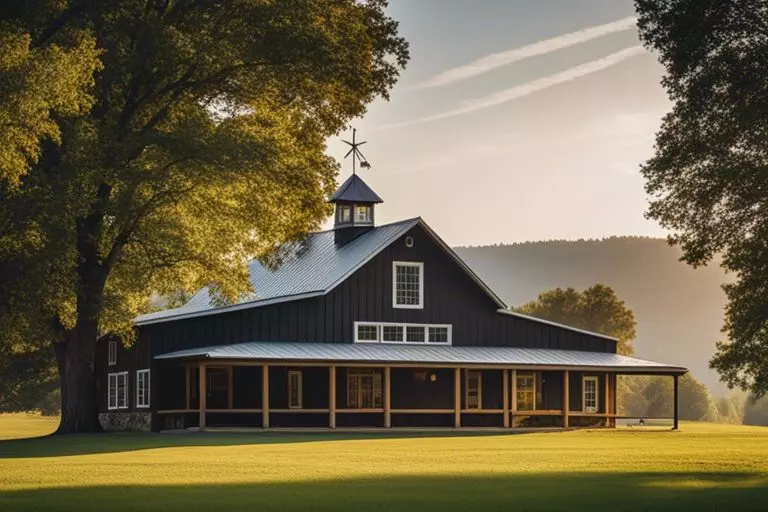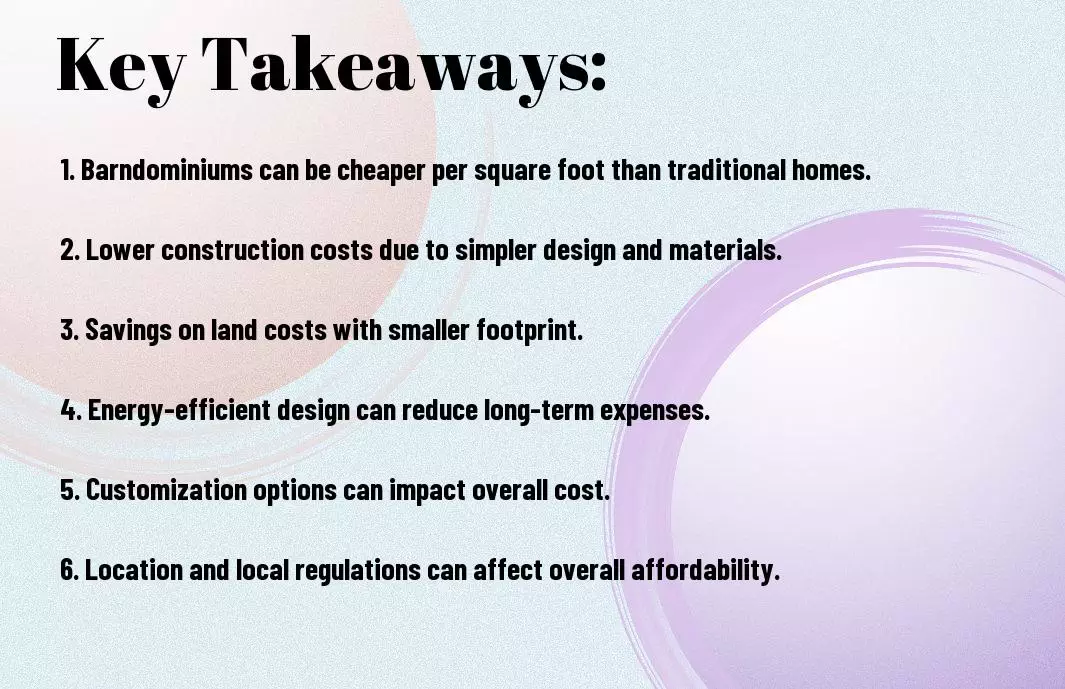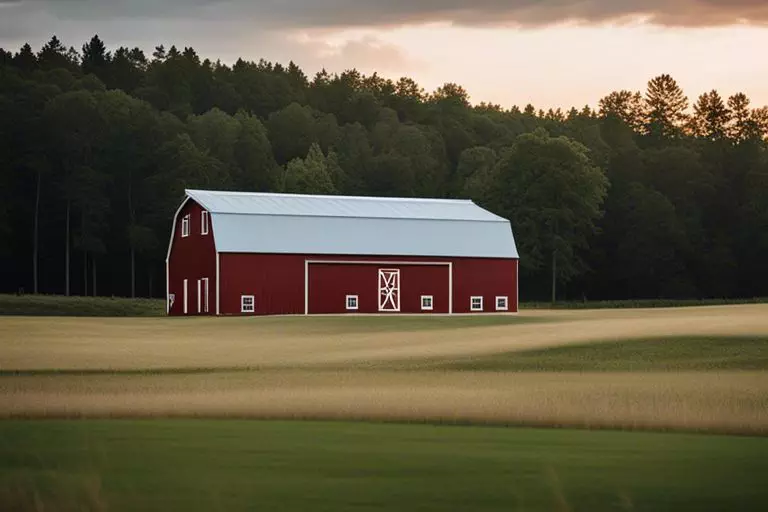You may have heard about the growing trend of barndominiums, a unique blend of barn and home that offers a cost-effective housing solution. In this blog post, we will explore whether building a barndominium is truly cheaper than a traditional house. We will explore into the cost-saving benefits, potential drawbacks, and key factors to consider when deciding if a barndominium is the right choice for you.
Key Takeaways:
- Initial Costs: Barndominiums can be a more cost-effective housing option compared to traditional homes, as they typically require less construction materials and labor.
- Customizations: While the upfront costs may be lower, the overall price of a barndominium can increase with customizations and upgrades, similar to traditional homes.
- Long-term Savings: Barndominiums are known for their energy efficiency and low maintenance costs, which can result in savings over time compared to traditional homes.
Defining Barndominiums
What is a Barndominium?
Before we research into whether a barndominium is cheaper, let’s first define what exactly a barndominium is. A barndominium is a type of home that is built to resemble a barn on the outside but designed for comfortable living on the inside. These structures typically feature a large open floor plan, high ceilings, and a rustic aesthetic.
Origins and Evolution
For those unfamiliar with the term, barndominiums have gained popularity in recent years, especially in rural areas. Originally conceived as a practical and cost-effective housing solution for farmers and ranchers, barndominiums have evolved into stylish and modern living spaces that appeal to a wide range of homeowners.
For instance, barndominiums are known for their affordability and energy efficiency. With their simple design and use of metal construction, barndominiums are often more cost-effective to build compared to traditional homes. Additionally, the open layout and high ceilings of a barndominium can help reduce heating and cooling costs, making them energy-efficient options for homeowners.
Comparing Costs
It Barndominium Cost vs. House Cost: What You Need To Know provides a comprehensive analysis of the costs associated with building a barndominium compared to a traditional home.
Traditional Homes vs. Barndominiums
To accurately compare the costs of traditional homes versus barndominiums, it is imperative to consider factors such as materials, labor, and customization. While traditional homes may offer a more conventional aesthetic, barndominiums typically boast lower construction costs due to their simpler design and use of metal building materials.
Moreover, barndominiums often provide more flexibility in floor plans and interior layouts, allowing homeowners to maximize space and functionality without breaking the bank.
Initial Investment and Long-term Savings
To determine the initial investment and long-term savings of building a barndominium, it is crucial to assess both short-term construction costs and potential future savings. While the upfront cost of constructing a barndominium may be lower than that of a traditional home, it is imperative to consider factors such as energy efficiency and maintenance expenses.
Another crucial aspect to consider is the resale value of a barndominium compared to a traditional home. While barndominiums may not appeal to all buyers, their unique design and cost-effective construction can be strong selling points in the real estate market.
When comparing costs between traditional homes and barndominiums, it is important to weigh the initial investment against long-term savings, resale value, and customization options. Barndominiums offer a cost-effective alternative to traditional homes, making them an attractive option for budget-conscious homeowners seeking a unique and efficient living space.
Material Costs
Metal Framing vs. Traditional Wood Framing
After deciding on the design of your barndominium, one of the significant considerations is the material costs. Metal framing is generally cheaper than traditional wood framing for barndominiums. Not only is metal a more affordable option upfront, but it also requires less maintenance in the long run. Metal framing is durable, less prone to warping or rotting, and can withstand extreme weather conditions, making it a cost-effective choice for your barndominium construction.
Insulation, Roofing, and Siding Options
For insulation, roofing, and siding options, there are various materials to choose from with different price points. Insulation such as spray foam may cost more initially, but it provides superior energy efficiency and can result in cost savings on heating and cooling over time. Regarding roofing and siding, options like metal panels or steel siding can be more cost-effective compared to traditional materials like shingles or wood. Consider the climate and maintenance requirements when selecting these materials.
To ensure long-term cost savings and efficiency, investing in quality insulation, roofing, and siding options is important for your barndominium. While upfront costs may vary, making informed choices based on durability and energy efficiency can lead to savings in the future.
Labor Costs
Many factors contribute to the labor costs associated with building a barndominium. These costs can vary depending on the complexity of the design, the construction time required, and the skill level of the laborers involved in the project.
Construction Time and Complexity
Complexity plays a significant role in determining labor costs for a barndominium. More intricate designs with custom features or unconventional layouts can require additional time and skilled labor to construct, consequently increasing labor costs. Additionally, factors such as the size of the building, the type of materials used, and any specialized construction techniques can also impact labor expenses.
Skilled Labor Requirements
For a barndominium project, skilled labor requirements are crucial. Unlike traditional homes, barndominiums often combine living spaces with large open areas such as barns or workshops, requiring specialized knowledge in both residential and commercial construction. Carpenters, electricians, plumbers, and other tradespeople with experience in both types of structures are crucial to ensure the project is completed safely and efficiently.
With skilled labor being a necessity for building a quality barndominium, it is crucial to budget for the higher labor costs associated with hiring experienced professionals. While this may increase initial construction expenses, the expertise of skilled workers can help prevent costly mistakes and ensure a well-built and durable final product.

Land and Site Preparation
For any construction project, including a barndominium, the location of the land plays a significant role in the overall cost. Rural and urban locations offer different advantages and challenges that can impact the cost of building a barndominium.
Rural vs. Urban Locations
Preparation in rural locations may be more straightforward and less expensive as there are typically fewer zoning restrictions and permitting requirements. However, rural sites may require additional utility hookups and road access, which can add to the overall cost. On the other hand, urban locations may have existing infrastructure in place, but the cost of land is usually higher, and zoning regulations may be more stringent.
Clearing, Grading, and Foundation Work
To ensure a strong foundation for your barndominium, clearing, grading, and foundation work are imperative steps in the site preparation process. Clearing the land of debris and vegetation, grading the site for proper drainage, and laying a solid foundation are critical to the structural integrity of your building.
Understanding the soil composition and topography of your build site is crucial to determine the extent of grading and foundation work required. Hiring a professional to assess the site and provide recommendations can help avoid costly repairs or structural issues down the line.
Energy Efficiency and Maintenance
Passive Solar Design and Energy Savings
Solar energy can play a significant role in reducing utility costs for a barndominium. By incorporating passive solar design principles such as strategically placed windows, thermal mass materials, and proper insulation, you can harness the power of the sun to heat and cool your living space more efficiently. This can result in lower energy bills and a more comfortable indoor environment throughout the year.
Low-Maintenance Features and Durability
Any homeowner can appreciate the appeal of low-maintenance features in their living space. Barndominiums often come with durable metal roofs, which require minimal upkeep compared to traditional roofing materials. Additionally, metal siding and concrete floors are easy to clean and maintain, saving you time and effort in the long run. These features contribute to the overall durability of a barndominium, ensuring that your investment stands the test of time with minimal upkeep required.
Maintenance: While traditional homes may require frequent painting, repairs, and upkeep, barndominiums offer a more cost-effective and low-maintenance alternative. With durable materials and thoughtful design choices, barndominiums can be easier to care for, allowing homeowners to spend less time on maintenance and more time enjoying their unique living space.

Summing up
The cost-effectiveness of a barndominium is dependent on various factors such as location, materials used, and customization. Generally speaking, building a barndominium can be more cost-efficient compared to traditional homes due to reduced construction time and potential savings on materials. However, it is vital to carefully consider all expenses involved, including permits, utilities, and interior finishes, to accurately assess the overall cost.
For further insights into the pros, cons, and costs associated with building a barndominium, you can refer to the comprehensive guide provided by What Is A Barndominium? Pros, Cons, And Cost. This resource can help you make an informed decision when considering a barndominium as a cost-effective housing option.
What are the Cost-Saving Benefits of Building a Barndominium on a Budget?
When considering affordable barndominium construction, one can enjoy numerous cost-saving benefits. By choosing a budget-friendly design and construction plan, homeowners can achieve significant savings on materials and labor. Additionally, the efficient use of space in a barndominium can result in lowered utility and maintenance costs in the long run.
FAQ
Q: What is a barndominium?
A: A barndominium is a type of building that combines a barn with a living space, typically designed to resemble a traditional home while incorporating features of a barn.
Q: Are barndominiums cheaper to build than traditional homes?
A: In general, barndominiums can be cheaper to build than traditional homes because they often require less labor and materials due to their simple and efficient design.
Q: What are the cost-saving benefits of building a barndominium?
A: Building a barndominium can be cost-effective because they typically have open floor plans that reduce the need for interior walls, and they can be constructed with metal siding and roofing which are often more affordable than traditional materials.
Q: What factors can influence the cost of building a barndominium?
A: Factors that can influence the cost of building a barndominium include the size of the structure, the materials used, the location of the building site, the complexity of the design, and any additional features or amenities included in the build.
Q: Are there ways to further reduce costs when building a barndominium?
A: Yes, there are several ways to reduce costs when building a barndominium, such as choosing standard materials over custom options, opting for a simple design without complex features, sourcing materials locally to avoid shipping costs, and doing some of the labor yourself if you have the skills and experience.
